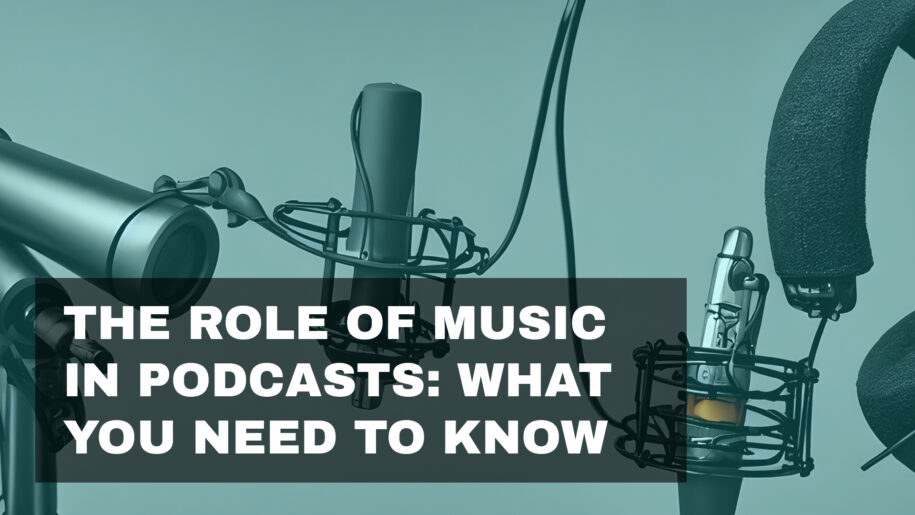Music plays a pivotal role in podcasts, enhancing the listening experience by setting the tone, emphasizing key moments, and making your content more engaging. Whether you’re using music for intros, outros, transitions, or background ambiance, understanding how to effectively incorporate music into your podcast can elevate your show. Here’s what you need to know about the role of music in podcasts.
1. Setting the Tone
Overview: Music helps establish the mood and atmosphere of your podcast, making it easier for listeners to connect with the content.
How It Works:
- Intro Music: Sets the initial tone and gives listeners a sense of what to expect.
- Background Music: Subtly enhances the narrative without overpowering the spoken content.
- Outro Music: Provides a smooth conclusion, leaving a lasting impression on the audience.
Tips:
- Choose music that reflects the theme and mood of your podcast.
- Use consistent music to create a recognizable brand identity.
2. Enhancing Engagement
Overview: Music can make your podcast more engaging by breaking up long segments and keeping listeners’ attention.
How It Works:
- Transitions: Use music to signal a shift between segments or topics.
- Emotional Impact: Music can amplify the emotional resonance of your content, making it more impactful.
- Energy Levels: Adjust the tempo and style of music to match the energy of your content, keeping listeners engaged.
Tips:
- Match the energy of the music to the content of the segment.
- Use short musical stings or jingles to maintain listener interest.
3. Creating a Professional Sound
Overview: High-quality music can give your podcast a polished and professional sound, making it more appealing to listeners and potential sponsors.
How It Works:
- Brand Consistency: Using a consistent musical theme helps build your podcast’s brand identity.
- Audio Quality: High-quality music production enhances the overall sound of your podcast.
Tips:
- Invest in professionally produced music or high-quality royalty-free tracks.
- Ensure your music levels are balanced with your spoken content.
4. Legal Considerations
Overview: Using music in your podcast requires careful consideration of copyright laws to avoid legal issues.
How It Works:
- Royalty-Free Music: Use music that is free to use without paying royalties, often available from various online libraries.
- Licensed Music: Purchase licenses for specific tracks if you want to use popular or copyrighted music.
- Creative Commons: Some artists allow their music to be used under certain conditions via Creative Commons licenses.
Tips:
- Always read and understand the terms of use for any music you plan to use.
- Consider using original music or collaborating with musicians to create unique tracks for your podcast.
5. Choosing the Right Music
Overview: Selecting the right music for your podcast involves considering your content, audience, and the overall feel you want to convey.
How It Works:
- Audience Preferences: Consider what type of music resonates with your target audience.
- Content Alignment: Ensure the music aligns with the tone and theme of your content.
- Variety: Use different types of music for intros, outros, and transitions to keep your podcast dynamic.
Tips:
- Experiment with different genres and styles to find what works best for your podcast.
- Use feedback from listeners to gauge how they feel about your music choices.
6. Technical Integration
Overview: Properly integrating music into your podcast involves technical skills to ensure seamless audio transitions and balanced levels.
How It Works:
- Audio Editing Software: Use software like Audacity, GarageBand, or Adobe Audition to edit and integrate music.
- Volume Levels: Balance the music and spoken content to ensure clarity and prevent the music from overpowering the dialogue.
- Fade Effects: Use fade-ins and fade-outs to smoothly transition music in and out.
Tips:
- Test different volume levels and transitions to achieve a professional sound.
- Listen to your podcast on different devices to ensure consistent audio quality.
Music is a powerful tool in podcasting that can enhance the listening experience, set the tone, and engage your audience. By carefully selecting and integrating music, you can create a professional and captivating podcast. Remember to consider legal aspects and always choose music that aligns with your podcast’s theme and audience preferences. With thoughtful use of music, you can elevate your podcast and leave a lasting impression on your listeners. Happy podcasting!


